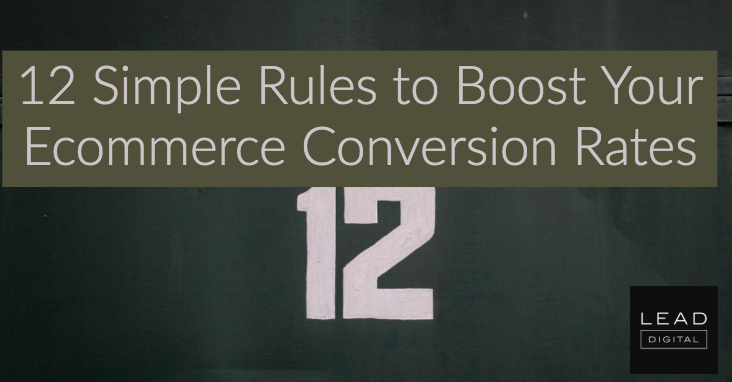 Would you be frustrated if you discovered that tons of your potential customers are leaving your ecommerce website (and that your conversion rates are in the pits) because of a poor visitor experience?
Would you be frustrated if you discovered that tons of your potential customers are leaving your ecommerce website (and that your conversion rates are in the pits) because of a poor visitor experience?
Unfortunately, that’s often the reality: many ecomm storefronts don’t have the best checkout experiences, and it absolutely crushes their sales efforts. This is most often the result of not understanding what customers need to see before they feel comfortable with buying.
There are several things you can do to avoid common abandonment pitfalls. Today, I’ll go over the 12 rules I follow to create a shopping cart experience that’ll grow your ecommerce conversion rates.
Rule #1: Avoid long forms
Let’s start with a classic example. In 2011, Expedia made a change to their checkout form that increased profits by $12 million.
What was it? Take a look:

They removed a single and inessential form field. We can learn from this.
Like Expedia, make the checkout experience as easy as possible for your customers. The longer your form, the less inclined people will be to fill it out. This can kill your conversion rates. For that reason, only ask for the information you absolutely must have (including billing and shipping information).
Consider this from the customers’ point of view. Every additional field is just another hindrance keeping them from buying your product—another missed chance at conversion rate optimization (CRO). Focus on the possibility of a lost sale due to friction instead of focusing on filling up your lead gen list.
If a field isn’t essential to your business, then why have it?
Rule #2: Use “email” as the first field in your checkout forms
Repeat business (when a customer returns to your site to make a purchase) is essential for every retailer, not just ecomms. It’s vital to reach out to these customers to entice them to buy again.
For this reason, a customer’s email address is the most critical piece of information you can get during the checkout flow.
Even if a visitor doesn’t complete their purchase, you can still use cart abandonment automation to recoup a sale you might have otherwise lost. (We’ll talk about this a bit more in our next point.)

Editor’s note. Even if your customers are based outside of areas where it applies, it’s always smart to ensure your forms are compliant with the EU’s General Data Protection Regulation (GDPR). Like other security features, it’ll help your visitors feel more secure as well as protect you from liability.
Rule #3: Use cart abandonment software
Even if your checkout form leads with email first, you’ll still have people who drop off during the purchase stage. However, you can use cart abandonment software to engage and nurture these customers—and, hopefully, get them back on track.
There are plenty of options for cart abandonment software available. For instance, you can use Rejoiner to create personalized emails and send them a custom number of days after the date of cart abandonment.

Rejoiner automatically retargets window shoppers with products they’ve viewed and related items. It also follows up with abandoners in real-time by using messaging that relates to their desired product. Plus, it helps save your customer’s carts so they can continue checking out from any device without having to re-enter their data or retrace their steps.
The goal of this type of software is to catch people before they change their minds completely. Clearly, these individuals were in the market for your product and they were so close to getting it, but maybe the price or the cost of shipping threw them off.
You can use cart abandonment software to reach out to these individuals with discounts and other offers to get them to complete an order.
In addition, survey platforms like Qualaroo can poll visitors and find out what they don’t like about your site or why they’re lingering on certain product pages. Then you can put those insights to work to improve your checkout flow, too. – Read more



